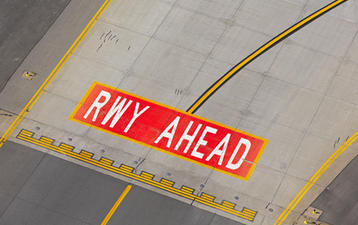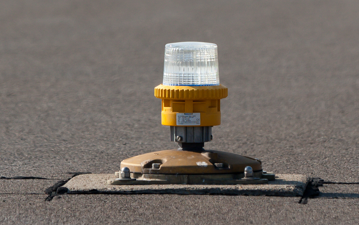Runway Incursion Prevention Studies
By definition, a runway incursion is “any occurrence at an aerodrome involving the incorrect presence of an aircraft, vehicle or person on the protected area of a surface designated for the landing and take-off of aircraft.”
As a result of the global increase in air traffic, aerodromes have to cope with growing numbers of runway movements every year. Going along with that, runway incursions and the potential for collisions are currently one of the most significant threats in aerodrome operations. It is the aerodrome operator’s responsibility to identify the factors that could contribute to a runway incursion and to mitigate them.
Especially, when changes are proposed to the airside layout (e.g. new runway entry taxiways), or in response to a safety event (incident or accident), or simply as part of a continuous improvement process, a “Runway Incursion Prevention Study” can be performed.
Such a study aims to identify potential for improvement in the current taxiway system in terms of designation (i.e. naming convention), infrastructure (layout, lighting, markings and signs), as well as operations (routings, restrictions, AIP publication, etc.) – considering available technology, legal framework and cost.
In the last few years, on behalf of complex international airports airsight successfully conducted numerous studies related to runway incursion prevention, or in-depth review of airport entire taxiway and runway systems.
The successful prevention of runway incursions requires a strong collaboration between stakeholders and a holistic view on airport planning and design, airport operations as well as airport and ATC equipment. For this purpose, airsight’s preferred method in such a project is based on a series of multi-disciplinary workshops involving pilots, airport planners and air traffic controllers, to identify the most important weaknesses of the current systems and make propositions on possible changes.
To enable an informed decision-making process for each scenario or area of interest, such a runway entry point is evaluated individually using a scoring matrix. This scoring matrix contains a list of pre-defined evaluation criteria, aiming to qualitatively rank elements in terms of e.g. the associated complexity of ATC Instructions, the adequacy of supportive guidance (markings, signs or lights), etc.
Scenarios, notably for complex hotspots, can be modelled using realistic 3D flight simulator (for day and night), to enable a good and systematic evaluation of the different options during the workshops.
The evolution of applicable regulations (ICAO, EASA, FAA) and best practices (ACI, IFALPA, EAPPRI) as well as equipment and technology in this field has been very rapid: A‐SMGCS, ARIWS (RIMCAS), remote camera or remote tower to name a few.
Nevertheless, one of the main challenges is that resources are limited, and changes – notably to layout complex and very costly. Therefore, operational solutions may be privileged over infrastructural solutions, using the “As low As Reasonably Practicable” (ALARP) principles to approach this dilemma and reduce cost.
Do you need a critical, neutral review of your airfield layout, and suggestions to improve both, the safety and efficiency of air operations, while minimising capital expenditure? Our experts are at your disposal to discuss the challenges you are facing – feel free to contact us!
You can attend one of our numerous training courses related to runway safety.
List of relevant regulations referenced in this article:
- ICAO Runway Safety Programme – Global Runway Safety Action Plan, First Edition, November 2017
- ICAO Doc 9870 AN/463, Manual on the Prevention of Runway Incursions
- IFALPA Runway Safety Manual, Prepared by the Aerodrome & Ground Environment Committee
- ACI Runway Safety Handbook, First Edition 2014
- EUROCONTROL NM, The European Action Plan for the Prevention of Runway Incursions, Version 3, November 2017
Key Facts
![[Translate to Deutsch:] Jan Walther - Head of Safety Department - airsight GmbH Jan Walther](/fileadmin/airsight/contacts/jan-walther-airsight-safety.jpg)


